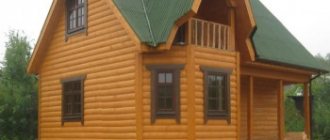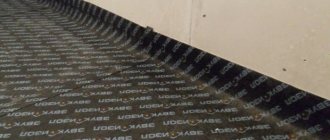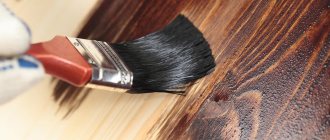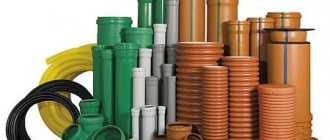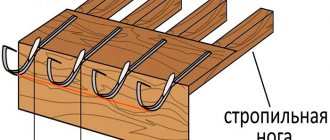In creating a cozy atmosphere in a country house, the decoration of the walls in the country house plays a significant role. Materials of varying costs can be used as final decorative finishing.
In the case where the work will be carried out in a seasonal house in which there is no constant heating, preference is given to budget options.
When purchasing a finishing material, it is important to understand whether it can be used in conditions of high humidity, which are inevitable in unheated rooms.
Lining
Another natural and budget material for finishing a country house interior.
It will fit perfectly into country style and will withstand temperature changes and humidity. The lining becomes wear-resistant and rot-resistant after applying special compounds. It can be installed on slightly convex or curved walls. The material can be painted, treated with stain, wax or oil, giving the desired natural shade. A more budget-friendly option is varnish, but over time it turns yellow. The layout of the elements can be any: diamond, herringbone, half wall. With the help of lining they decorate the ceiling or highlight certain zones.
House on Long Island with ocean views
The glass walls of this home by Kanner Architects allow you to enjoy views of the Atlantic Ocean from inside the home and from different viewing angles.
At the request of the Federal Emergency Management Agency (FEMA), the house was raised above the ground level, so the architects created a covered parking lot for four cars under the house and a glass entrance leading to the two-story residence.
White awnings attached to the outside of the house hide the inside of the house a little, especially at night.
Board
Suitable for both wall decoration and floor covering. The main difficulty is to choose the right material: the boards should not be wet and, conversely, overdried. They look impressive after treatment with protective compounds, give a country house a special charm and fill the atmosphere with coziness.
For dacha floors, there are special boards that are laid using the tongue-and-groove technology. This is the most reliable connection that allows you to create a strong and even floor.
Brushed and barn boards are still in fashion, but despite its aged appearance, the finished material is quite expensive. To avoid costs, the elements can be processed yourself.
Step-by-step finishing instructions
The finishing of the second floor at the dacha can be done with eurolining. For this, it is best to use the lightest breeds, which include:
- ash;
- spruce;
- maple;
- fir.
This will increase the space on the second floor. The work will require slats, the width of which ranges from 5 to 15 cm. Before finishing the second floor in the dacha, you will need to fill a wall frame, between the elements of which a distance of 50 cm is maintained. When finishing the attic with clapboard, the cladding is fastened with small nails. The surface is covered with a protective layer, which can be mastic, stain or varnish.
When considering options for finishing the attic, you may want to make the dacha less monotonous. To brighten up the interior, you can use MDF panels, which will add harmony to the interior, and also make the walls and ceiling durable and warm. If desired, the floor can be covered with laminate, and the walls can be decorated with MDF panels coated with cork. Wooden baseboards will complement the attic.
The attic floor room in the ceiling area can be supplemented with beams, which will give the interior a unique and rustic flavor. A small attic can be lined with plywood from the inside. But if the room has high humidity, you should avoid using this material. But if the space is heated, you can also paste wallpaper. When decorating a dacha, you can give preference to cheap finishing materials, for example, paper.
Logs or block house
If the walls of a country house are built from logs, try not to hide the authentic beauty of the wooden walls. Logs are a surprisingly durable and reliable material, and after repair they will last for decades.
House panels are used to decoratively imitate log walls. From the outside, they have a semi-cylindrical shape and are fastened with a tongue-and-groove locking connection. A block house made of wood is used for the interior, and vinyl is used for the façade cladding.
Facing a stone house with bricks
Despite the abundance of finishing materials, brick facades remain a “classic”, without losing popularity among private developers. Such a facade can serve for many years, it is frost-resistant, moisture-resistant, increases the thermal inertia of the sheathed house, does not require any effort to maintain aesthetic qualities during operation, and finally, it is simply beautiful and solid. Such a facade will decorate any stone building.
Cladding of a brick house.
And we, of course, are not talking about “dull sand-lime brick laid on the central fiber board.” Now in our country there are more than 5,000 different types of bricks, and there is plenty to choose from. Although, perhaps, the yellow jersey of the leader has remained with the famous yellow brick for several decades.
Wall-e FORUMHOUSE Member
These yellow houses are our national tradition, our feature! Maybe the Germans are already tired of their stucco houses with faded facades, and they also spit, like we do at ours, and praise our houses. A German comes to us, looks at the yellow-brick clad houses and admires: “Oh, zer gut, karasho, what an unusual special style, we don’t have such houses, very karasho!”
These are the options for finishing facades that are recognized as suitable by members of our portal, professional architects and builders.
But these are not.
Wall-e
I have a normal attitude towards yellow brick if it has a light seam, and if it does not interfere with brown brick (corners, openings are trimmed) - this is bad manners.
The construction of a brick facade requires a particularly responsible approach. This is not siding that can be dismantled and structural elements that have become unusable can be replaced. A brick facade requires careful calculation, the use of only high-quality materials and tireless monitoring of the work of the team.
Gleb Green Member of FORUMHOUSE
Brick can be different. Even what is called clinker does not always provide a reliable façade. There are nuances: the quality of the masonry work, the masonry mortar, and the brick itself may be perfect in appearance, but it falls out in clumps already in the second or third winter.
Cladding a brick house
We recommend you an article on FORUMHOUSE, which tells you how to connect facing bricks to a load-bearing wall, how to install an insulated brick facade , what difficulties you can encounter when finishing a house with bricks and how to avoid them.
The topic of our participant Elgrand was one of the top ones for a long time - also because everyone liked the process of cladding with ivory brick: neat and reliable. She managed to prove the correctness of the “we are building a non-budget house on a budget” approach and inexpensively giving a house made of blocks a solid and beautiful look.
A member of our portal, Alexander3626, built a stone house, and knew for sure that he would line it with brick, but could not choose a manufacturer. The rich choice made it difficult to make the right decision. Experienced and experienced builders who were well versed in the topic came to his aid. This is the algorithm they proposed. To make a decision, you need to consider the following important factors:
- Construction region.
- Approximate brick volume.
- Facade project with color layout.
- Smooth or embossed brick is needed.
- Bavarian or ordinary masonry is provided.
This approach will allow you to reduce the list of offers and make the right choice. One more thing: you may like the “fresh” brickwork, but the old cladding is not at all what you like. See how it looks after 3-4 years, when the brick has already gotten wet and dried several times, and efflorescence has fully appeared.
We offer you our article on the prevention and “treatment” of efflorescence.
Glass wallpaper
If you are looking for a more conventional, but at the same time durable material for finishing walls, fiberglass wallpaper is an ideal option. They are often used to decorate public places because they are resistant to mechanical damage and are not afraid of high humidity, fire and ultraviolet radiation. They also protect the walls from insects and slightly level the surface.
By choosing such glass wallpaper instead of paper or non-woven wallpaper, you are investing in the future: updating the renovation will not be difficult, since the coating can be painted several times.
Real-size wooden doll house design
A life-size glow-in-the-dark doll house was located in Canada Field.
Its author, Heather Benning, accidentally found out about an abandoned farmhouse in Saskatchewan (Canada) in 2007 and decided to turn it into a doll house.
The interior was renovated, but the designer decided to leave the outside looking natural.
One wall had to be removed and replaced with glass to make it look like a dollhouse.
In October 2012, the antiquity of the house began to take its toll, and it had to be burned. The agreement was to leave the house as long as it was safe, but in March 2013 the doll's house had to be razed to the ground.
Decorative plaster
The material cannot be called the cheapest, but if you wish, it is not difficult to find affordable compositions. Plaster imitates a variety of textures (stone, wood, concrete), and is perfect for finishing even wet rooms.
It is resistant to mechanical stress and easily tolerates temperature changes, which is especially important for a country house. Fans of decorative plaster value it for its durability and ability to hide minor irregularities.
Ideal for creating an interior in eco, Provence, country, chalet styles.
Sheathing options
Today, the construction market offers many variations and a variety of materials that are ideal for finishing a country house. Among a fairly impressive list, you can choose something according to the preferences of the home owner and his financial capabilities.
Lining
Lining is rightfully considered one of the most popular materials used for arranging summer cottages. The advantages of the panels speak for themselves. This:
Natural and aesthetic material - a godsend for framing a country home
- their pleasant aesthetic appearance, allowing you to imitate a variety of textures;
- affordable price;
- high thermal insulation performance;
- ease of installation, which can be handled even without much experience in repair work;
- environmental friendliness of the material.
Interior decoration of a country house with clapboard is a great idea for those who value comfort and coziness above all else. By experimenting with textures and shades, owners have the chance to create a memorable interior without spending a fortune.
The lining will decorate not only the rooms, but also the facade of the house
What should you consider during the installation process?
- High-quality finishing is possible only when using wooden sheathing as a base.
- If you want to insulate the walls of your house, you can put mineral wool, glass wool or expanded polystyrene into the frame.
- Wooden slats for the base should be secured either with nails or self-tapping screws.
Without a frame, installation of lining panels will be incomplete
I also want to note that lining can be a very inexpensive and practical answer to the question of how to decorate a change house into a country house.
Change houses finished with clapboard
Drywall
Drywall is not much inferior to lining in popularity. This is a universal material used both for leveling walls or arranging interior partitions, and for decorating window slopes.
Drywall is universal, it can be used for cladding almost any surface
Instructions for installing drywall are as follows:
- The first step is to create a frame from metal or wooden slats. They are fixed to the wall with screws or self-tapping screws at a distance of 40-50 cm from each other.
Lathing for installing gypsum boards on the ceiling
- Afterwards, plasterboard slabs are attached to the frame. The joints between the sheets are sealed with putty and then primed.
Brief instructions for puttying gypsum board joints
- After about 6-8 hours (this is exactly how long it will take for the primer to dry), you can proceed to pasting or painting the walls.
Now you can decorate the room
Plywood
This is what fully corresponds to the famous phrase “cheap and cheerful.” If you are thinking about how to decorate the walls to make it as budget-friendly as possible, then plywood will come in handy. This material allows the walls to “breathe”, it has good water resistance (so it can be used for cladding a bathroom) and sound insulation.
Even plywood can look very interesting
In addition to such impressive advantages, I would like to add easy installation with your own hands, which can be handled by people who have never done repairs before. As a finishing touch, the plywood can either be painted with bright paint or covered with wallpaper.
Plywood trim? Why not!
Linoleum and laminate
These floor coverings require high-quality surface preparation. Most appropriate in houses designed for all-season use. For a country house, it is recommended to choose moisture-resistant laminate sheets that will withstand exposure to water and condensation.
If your choice falls on linoleum, it is wiser to purchase a commercial type, which is resistant to abrasion and protected from force. In a country house, flooring in natural shades will look harmonious.
One of the advantages of a country house is that in its setting you can embody the most unusual ideas. This is where you can feel at one with nature and escape from the worries of the city.
Types of putty materials used
Putty, like all building mixtures, is divided into types. The main difference is the base of the dry mixture: cement, gypsum or polymer.
Putty is applied on the base from which the plaster is made.
That is, if plastering work was carried out with gypsum mortar, then the putty should contain gypsum.
Attention. Cement putty should not be used on gypsum plaster. This will lead to peeling in no time.

